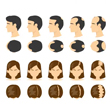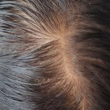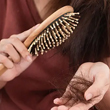Does Wearing a Hat or Helmet Cause Hair Loss?
Introduction
‘Does wearing a cap cause hair loss?’ is one of the common queries of people wearing a hat or helmet regularly. People think that wearing a hat regularly affects the “breathing process” of the scalp because it is believed that hair loss occurs due to lack of oxygen. The truth is, your hair follicles are not dependent on external oxygen for growth. They take oxygen from the blood present inside your body.
The things that actually cause hair loss are usually your diet, stress, hormonal changes, genes, etc. Read on to know whether hats or helmets are the main culprits for hair loss or not.
Hats/Helmets and Baldness – Introducing Traction Alopecia
Traction alopecia results in scarring and miniaturization of the hair follicles over time, making them super-fine. A person will face this problem if they regularly do pulled-back hairstyles such as tight or sleek ponytails, dreadlocks, buns, braids, cornrows, etc. Aggressive brushing and using hot oil treatment can cause this too. You are also at the risk of traction alopecia if your hair has undergone some chemical treatment with relaxer or dye.(1)

Traction alopecia might also be caused by weaves or hair extensions. And, elastic headbands or helmets, especially sports helmets, can cause hair thinning leading to traction alopecia. You are also at risk of traction alopecia if you wear hair accessories like slides or grips.
Occasionally doing tight hair-do’s isn’t a problem and it’s normal for both men and women to lose 50 to 100 strands of hair a day. Studies have shown that generally, new hairs grow and recover the amount of hair that we lose. If you feel that your scalp is hurting when you do certain hairstyles, chances are, your hair is getting damaged.
Other Reasons of Hair Loss
Not only tight hairstyles and hair accessories but there are also other things that result in hair loss as well. Here are a few more reasons to watch out for.
Genetics
If someone has a family history of hair fall, chances are, they will face the same. Alopecia Areata is the most common genetic condition that causes excessive hair fall and results in small patches. If someone suffers from this condition, wearing a hat or helmet may aggravate the problem.
Stress
Emotional stress can be a reason behind someone’s hair fall too. Medically termed as Telogen Effluvium, this condition makes one’s hair follicles weak, resulting in rapid hair fall. To handle stress, exercise and a healthy lifestyle can be of great help.
Childbirth
Many women face this problem after pregnancy. Known as Postpartum Telogen Effluvium, this happens as a result of the psychological stress a female body undergoes while giving birth.
Medications
Certain medications and supplements can cause hair loss. Medication for thyroid dysfunction, heart disease, depression, etc can often result in hair fall
Nutrient Deficiency
For healthy hair, nutrients such as proteins, minerals, vitamins, etc are a must. Human hair contains 95% keratin, which is fibrous, helicoidal protein. Hence, its deficiency can make one’s hair dry and damaged. Sudden weight loss, lack of protein in a diet can result in excessive hair fall as well. (https://activilong.com/en/content/95-structure-composition-of-the-hair)
Ways to Spot Balding
There is no specific age for balding to be noticeable if you are genetically destined to go bald. It is said that baldness comes from the mother’s father because male pattern baldness genes were identified in the X chromosome inherited by males from their mothers in several tests.(2)
However, as previously mentioned, hair loss is not solely dependent on this one. And we’re often too late to notice the changes in our hair. Here are some signs that will help you know whether you’re balding or not.
The first thing you will notice is your hairline. If you are balding, you will see that your forehead is becoming larger than usual. While brushing your hair, you’ll notice a bald spot on your head. Also, you will notice that your hair looks thinner and drier
As soon as you address the symptoms mentioned above, take the necessary steps. Talk to a medical professional before it’s too late.
Does Wearing a Hat/Helmet Cause Hair Loss?
Scientists investigated in a study to see how different environmental factors affect hair loss in 92 pairs of identical twins. The results showed that the ones who wore hats experienced less hair loss than those who didn’t.(3)

It’s no longer a secret that wearing hats and helmets has nothing to do with baldness. However, it is possible that the things that a person puts in their hair cause baldness, especially if they pull their hair tightly. Hats and helmets don’t pull the hair, but if they are very tight, they cause pressure on the scalp, resulting in irritation. Doing this every day will cause your hair follicles to lose their strength. So, make sure to wear hats and helmets that are a little bit loose-fitted.
Steps to Contain the Damage
To prevent your hair from getting damaged, you need to make some simple changes. Go for loose-fitting hats and helmets instead of tight-fitted ones. Also, you can cover your head with a satin or silk cloth for maximum protection. Avoid tight ponytails, braids, or buns. If you feel pain in your scalp, it’s time to stop doing it.
Also, using too much heat on your hair can cause damage. You’ve probably heard that hot oil massage is good for your scalp. But it’s the opposite. Hot oil treatments can harm your hair follicles, leading to more hair fall. Make sure to be gentle while brushing your hair. If you are being treated with chemotherapy, a cooling cap can be a useful tool to reduce hair loss.
Sunscreens can only protect our skin from the dangerous UV rays. To protect your hair, try to wrap a scarf around your head when the heat is too much. Other than doing all these, make sure to consult a professional immediately after you notice a change in your hair.
Conclusion
By now, you must have received the answer to the question, ‘Does wearing a cap cause hair loss?’ So, it’s time to take the remedial steps and follow the tips mentioned in this article to avoid hair loss and welcome hair growth. In case you have already lost much of your hair, you might need to take a hair loss supplement.
Myth Busters HairFall

Androgenetic Alopecia - Everything You Need To Know
Have you been experiencing excessive hair fall over a prolonged period of time? It could be an early sign of androgenetic alopecia. It is a hair loss disorder common in both genders and can lead to progressive thinning and even baldness in some patients if not caught and treated early.

How To Make Hair Grow Faster For Men
A head full of healthy hair is a matter of confidence. Hair has its own mechanism of growing and shedding, and it is when this mechanism is thrown off that growth is hindered. Especially in the case of males, hair growth faces a lot of hiccups that can easily be managed.

Female Pattern Baldness - Causes & Treatments
Have you suddenly noticed an increase in the number of hair strands on your pillow in the morning? Or is your ponytail getting thinner by day? Well, you might be suffering from female pattern baldness. While that does sound scary, identifying it early on is key to treating this condition effectively. So keep reading to know what this is, how you can identify it, and most importantly, what treatments you can avail of to get your beautiful lustrous hair back.

What Are The Reasons For Hairfall?
Almost everyone experiences some amount of hair thinning over the years. Shedding around 50 to 100 single strands of hair per day is considered normal. However, losing more than 150 strands a day, experiencing sudden thinning, or developing circular bald patches on your scalp are reasons for concern. Hair loss occurs when new hair doesn’t grow fast enough to replace the amount of hair you lose daily. Hair can fall due to various reasons, with hereditary hair loss and poor nutrition being the most common hair fall reasons.

Expert Approved Tips For Hair Growth
What can be more debilitating than seeing hundreds of hair strands shedding from your scalp every time you brush your hair? Also, excessive molting occurs during seasonal changes that can be very stressful for you. Although it’s okay to lose between 50-100 strands every day, according to the American Academy of Dermatology, the problem occurs when you start shedding more than normal. But that doesn’t mean you have to feel helpless as there are ways to grow your hair back. Even if you are coping with baldness or alopecia, certain hair growth tips from dermatologists can come to your rescue. Read on to discover how these tips can be your savior when abnormal hair fall problems are in sight.
Trending Videos
+ 3 Sources
'LMRC - GGI-CO-A2-DMA-300001252-300001252-WM-L21-704'
© 2021 Dr. Reddy’s Laboratories Ltd. All rights reserved.